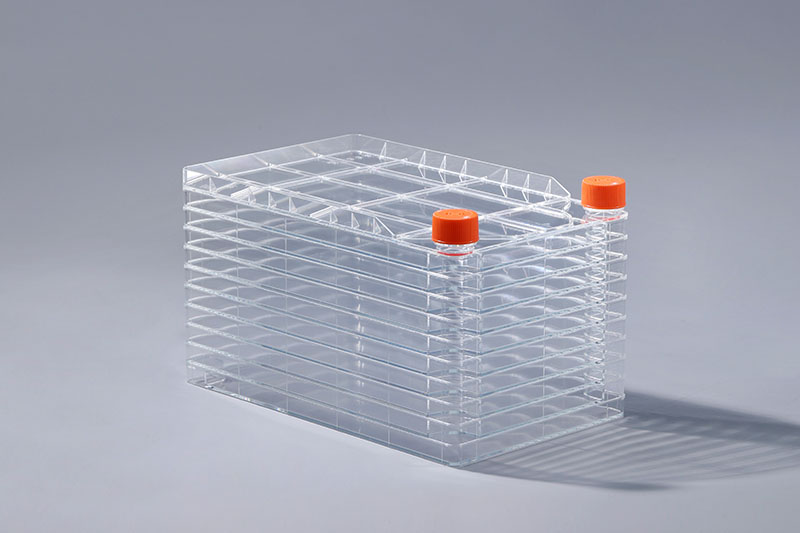The cell growth curve is a common method for determining the absolute growth number of cells, an important indicator for determining cell viability, and one of the basic parameters for the biological characteristics of cultured cells. The cell factory is mainly used for the culture of adherent cells, so how to draw the cell growth curve?
Generally, after the cells are passaged, they are suspended for a short time and then adhere to the wall, and then spend different incubation periods of different lengths, that is, they enter the exponential growth phase of massive division. After the cells reach saturation density, they stop growing, enter the plateau phase, and then degenerate and die. In order to accurately describe the dynamic changes of cell numbers in the whole process, a typical growth curve can be divided into four parts: a slow-growing latent period, an exponential growth period with a large slope, a plateau-shaped flat-top period, and degeneration and decay. The growth curve was obtained by plotting the number of viable cells (10,000/mL) against the culture time (h or d).
1. Incubation period: Digestion and passage have an effect on the cells, so the treated cells need to be re-adapted to the new growth environment. Primary cells need at least 24-96 hours, and immortal cells need 6-24 hours;
2. Logarithmic growth phase: The number of cells in this phase shows a logarithmic growth trend. The logarithmic growth period varies according to different cell types, generally 3-5 days;
3. Stasis phase: Generally speaking, the cells will eventually grow to form a monolayer. When the contact environment and the number of cells reach a mutually suitable level, the cells will no longer grow and the activity will be in the stagnating phase.
By observing the growth curve of cells in the cell factory, we can understand the growth process of cells, so as to analyze the proliferation rate of cells, and determine the time of cell passage, cryopreservation, and drug addition.
The FAI climbed 5.9 percent year-on-year in the first 11 months of 2018, quickening from the 5.7-percent growth in Jan-Oct, the National Bureau of Statistics (NBS) said Friday in an online statement.
The key indicator of investment, dubbed a major growth driver, hit the bottom in August and has since started to rebound steadily.
In the face of emerging economic challenges home and abroad, China has stepped up efforts to stabilize investment, in particular rolling out measures to motivate private investors and channel funds into infrastructure.
Friday's data showed private investment, accounting for more than 60 percent of the total FAI, expanded by a brisk 8.7 percent.
NBS spokesperson Mao Shengyong said funds into weak economic links registered rapid increases as investment in environmental protection and agriculture jumped 42 percent and 12.5 percent respectively, much faster than the average.
In breakdown, investment in high-tech and equipment manufacturing remained vigorous with 16.1-percent and 11.6-percent increases respectively in the first 11 months. Infrastructure investment gained 3.7 percent, staying flat. Investment in property development rose 9.7 percent, also unchanged.
 English
English



















































